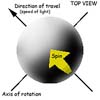| . |  |
. |
Jack Kilby, the Nobel Prize-winning inventor of the integrated circuit that laid the foundation for the computer and electronics industries, has died, his company, Texas Instruments, said. He was The company said in a statement Tuesday that Kilby, who invented the first monolithic integrated circuit, died after a battle with cancer. He won the Nobel Prize for physics in 2000 for his invention, which laid the foundation for modern microelectronics. During the 20 years following his discovery, products made possible by his semiconductor helped the electronics industry grow 20 fold, jumping to nearly 500 billion dollars a year by 1988. "In my opinion, there are only a handful of people whose works have truly transformed the world and the way we live in it - Henry Ford, Thomas Edison, the Wright Brothers and Jack Kilby," said Texas Instruments chairman Tom Engibous. "If there was ever a seminal invention that transformed not only our industry but our world, it was Jack's invention of the first integrated circuit," he said. After serving in World War II, Kilby completed his bachelor's degree in electrical engineering in 1947 at the University of Illinois and later got a master's degree from the University of Wisconsin. He began working for Texas Instruments in Dallas, Texas in 1958 and developed his invention during the August shutdown because he had not yet earned vacation time. Kilby's semiconductor put an entire electronic circuit on a single piece of material, creating what some called a second industrial revolution. This formed the basis for electronic calculators, computers and hundreds of other devices. "I was sitting at a desk, probably stayed there a little longer than usual," he recalled in a 1980 interview. "Most of it formed pretty clearly during the course of that day. When I was finished, I had some drawings in a notebook, which I showed my supervisor when he returned. There was some slight skepticism, but basically they realized its importance." Kilby and Texas Instruments officials put the circuit to the test September 12, 1958. It worked, and his invention transformed the industry. In 1960, the company announced the first chips for customer use. Two years later, Texas Instruments won its first major integrated circuit contract to design and build a family of 22 special circuits for the Minuteman missile. "Jack's invention of the integrated circuit in 1958 was a great example of 'thinking outside the box,'" said George Scalise, president of the Semiconductor Industry Association. "Jack Kilby's genius helped launch one of the world's most important industries. We will miss him greatly, and we extend our sympathies to the Kilby family." In addition to the Nobel Prize, Kilby received the National Medal of Science and the National Medal of Technology, the highest technical awards given by the US government. In 1993, he was awarded the Kyoto Prize in Advanced Technology. He also received the first international Charles Stark Draper Prize, the world's top engineering award, from the National Academy of Engineering in 1989. "Jack was one of the true pioneers of the semiconductor industry," said Texas Instruments president and chief executive Rich Templeton. "Every engineer, myself included, owes no small part of their livelihood to the work Jack Kilby did here at Texas Instruments." Although he invented the hand-held calculator in 1965 to show a practical use for his semiconductor, Kilby continued to use a slide rule. He also eschewed digital watches. All rights reserved. � 2004 Agence France-Presse. Sections of the information displayed on this page (dispatches, photographs, logos) are protected by intellectual property rights owned by Agence France-Presse. As a consequence, you may not copy, reproduce, modify, transmit, publish, display or in any way commercially exploit any of the content of this section without the prior written consent of Agence France-Presse. Related Links Texas Instruments SpaceDaily Search SpaceDaily Subscribe To SpaceDaily Express  Los Alamos NM (SPX) Jun 20, 2005
Los Alamos NM (SPX) Jun 20, 2005University of California scientists working at Los Alamos National Laboratory have developed a novel method for controlling and measuring electron spins in semiconductor crystals of GaAs (gallium arsenide).
|
| ||||||||||
| The content herein, unless otherwise known to be public domain, are Copyright 1995-2016 - Space Media Network. All websites are published in Australia and are solely subject to Australian law and governed by Fair Use principals for news reporting and research purposes. AFP, UPI and IANS news wire stories are copyright Agence France-Presse, United Press International and Indo-Asia News Service. ESA news reports are copyright European Space Agency. All NASA sourced material is public domain. Additional copyrights may apply in whole or part to other bona fide parties. Advertising does not imply endorsement, agreement or approval of any opinions, statements or information provided by Space Media Network on any Web page published or hosted by Space Media Network. Privacy Statement All images and articles appearing on Space Media Network have been edited or digitally altered in some way. Any requests to remove copyright material will be acted upon in a timely and appropriate manner. Any attempt to extort money from Space Media Network will be ignored and reported to Australian Law Enforcement Agencies as a potential case of financial fraud involving the use of a telephonic carriage device or postal service. |